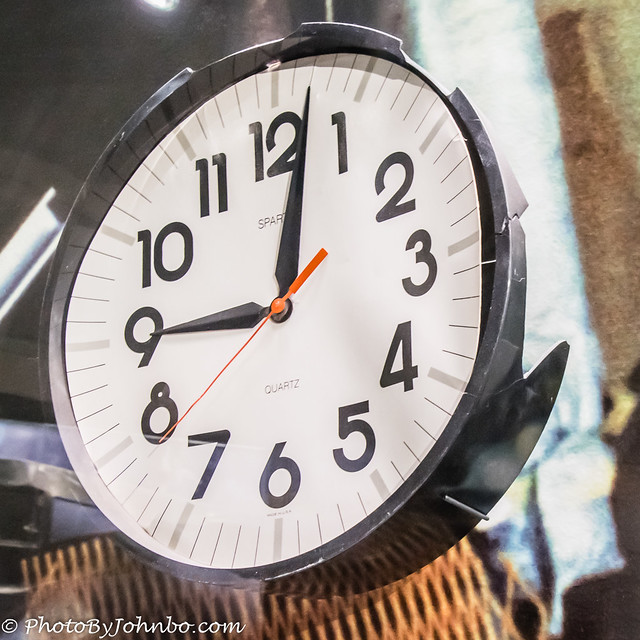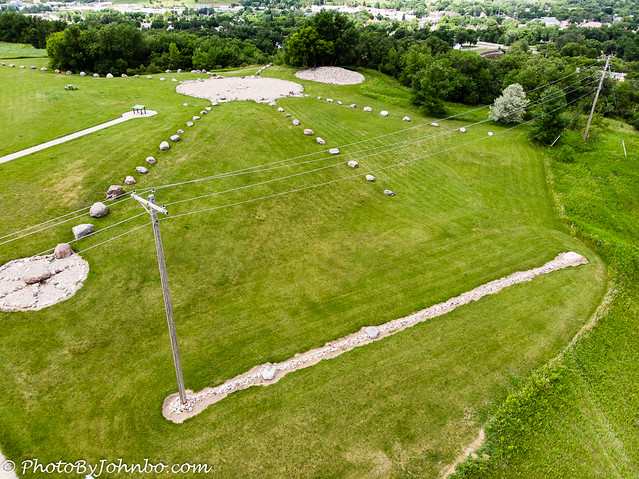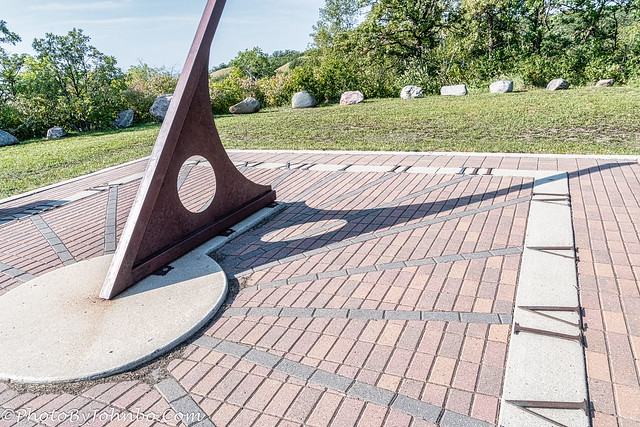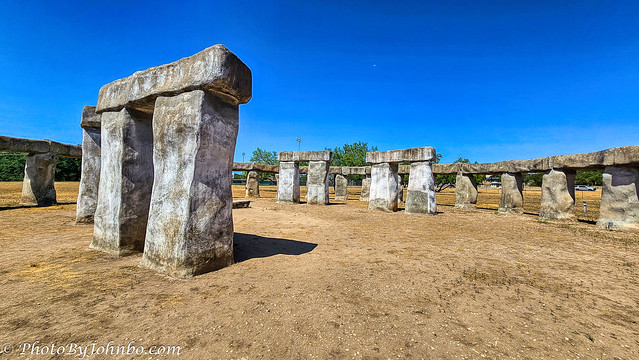
If I could save time in a bottle
The first thing that I’d like to do
Is to save every day ’til eternity passes away
Just to spend them with you
– Jim Croce
This week, Donna invites us to focus on time. She writes, “Time: It can be wasted, saved, and can slip through our fingers. Some of us have too much, others not enough. Is it high time? The last time? Time for Fall? Taco time?” You can read her entire challenge post here.
This month, my wife and I are traveling with my niece and her husband through the southern states. As this is being written, we are in Mississippi. By the time this post auto-publishes on Thursday, time and miles will pass and we will arrive in Key Largo (if all goes according to our plans, anyway, and time allows.) Our timeline includes Key West and some time also on the Atlantic coast of Georgia. Of course, we’ve learned on these month-long autumn journeys that time has a habit of surprising us.
For my contribution this week, I will focus on the measurement of time. One of the staples of railroad travel is the clock at the train depot. Trains went by the schedule and if you had tickets, you’d best pay attention to the clock and be sure to be on time… though the trains weren’t always on time themselves. This image features the clock at the old train depot in my hometown of Fargo, North Dakota. The clock still functions, but the passenger depot has moved and the original building is now a senior center.
The Oklahoma City National Memorial honors the victims, survivors, rescuers, and those whose lives changed forever on April 19, 1995. A terrorist bomb destroyed the building and killed 168 people, injuring almost 700 more. The clock on display in the museum was in a building across the street that also suffered damage from the blast. It stopped at the exact moment of the explosion that destroyed the Alfred P. Murrah Building.
Clocks aren’t the only tool that measures time. This utility pole was put to good use in Medicine Wheel Park at Valley City, North Dakota as a Meridian Calendar. The meridian calendar uses the length of a shadow cast by a utility pole to mark the beginning of each season at local apparent noon.
Near Bottineau, North Dakota, another type of celestial calendar is used to mark the seasons. On the appropriate equinox, the sun lines up with the slots in the walls behind the arched stone wall to mark the changing of the seasons.
Prior to the invention of mechanical clocks, there were several inventions that were used to tell time. One of the earliest is the sundial. At Mystical Horizons, a beautifully sculpted sundial marks the daily passage of time.
I have never been to England’s Stonehenge, and can only surmise its purpose as related to the solar calendar. According to the Online Britannica found here, “Though there is no definite evidence as to the intended purpose of Stonehenge, it was presumably a religious site and an expression of the power and wealth of the chieftains, aristocrats, and priests who had it built—many of whom were buried in the numerous barrows close by. It was aligned on the Sun and possibly used for observing the Sun and Moon and working out the farming calendar.”
In Ingram, Texas, a sculptor recreated Stonehenge II created as an art project by the late Al Shepperd, and his neighbor Doug Hill more than 20 years ago on Shepperd’s land in nearby Hunt, Texas. It is now part of the Hill Country Arts Foundation within the city. The attraction is one of the many enjoyable stops in the Texas Hill Country.
Mammoth National Monument is the site of the only known remains of a herd of “Columbian Mammoths.” The site also includes fossils of a camel, a bull mammoth, and female mammoths. The fossils are in the original place of initial discovery and are some 66,000 thousand years old.
This description of how carbon dating works is definitely from a layman’s perspective. We know of the approximate time of their lives through the use of another time “clock”, a technique called carbon dating that uses radioactivity to determine an approximate time when the life form died. When an organism dies, it stops absorbing carbon. The carbon-14 in the organism’s remains begins to decay into nitrogen-14 (¹⁴N) at a known rate. The half-life of carbon-14 is 5,730 years. This means that half of the carbon-14 in a sample will decay into nitrogen-14 every 5,730 years. By measuring the amount of carbon-14 remaining in a sample, scientists can estimate how long ago the organism died. The older the sample, the less carbon-14 it will contain.
I hope you enjoyed my images that focus on measuring time. Last week, Anne challenged us with Black and White, and next week Egidio of Through Brazilian Eyes is our guest host. If you’d like to join in on the challenge responses, check here.
In the last two weeks, we’ve visited two new states that haven’t yet been featured in our Travel Tuesday posts, and in the next few months, I’ll be sharing photos of our journey across the southern United States. If I am slow to respond to your comments, have patience while we travel. I will be reading them all.
John Steiner







Are you the first to bring Stonehenge into this challenge?
First I’ve seen, but truthfully since I’ve been on the road, I haven’t seen all of the responses this week yet.
From sundials to Stonehenge replica to fossils from the long gone past!
This is really amazing for the topic of Time 🙂
Thanks, Hammad!
Great exploration of methods of telling time, John. Wonderful idea to bring in Stonehenge and carbon dating. The monument in Oklahoma City was so moving. I like your explanation, too. I hope you have safely arrived in Florida.
Thanks, Patti. Though the original purposes of Stonehenge have been lost to time, we can only surmise.
We are in Naples, FL today, on our way to the Keys but first, a tour this morning is on our schedule to view the Florida Everglades via air boat.
Wonderful! I’ve always wanted to do that. Enjoy.
I didn’t know of the existence of a Stonehenge replica. FYI, I have been to the original in England.
When we visited England last year, we were hoping to make it to Stonehenge, but we simply ran out of time in our short stay there. Next time. 🙂
Terrific John! Loved your unique approach this week, especially as you went way back in time! Terrific exploration of various ways of measuring time through the years
Thanks, Tina. Maybe I was too literal.:-)
So good John. I love the Fargo clock 🙂
I was going to use a sundial too but forgot 😁
The Fargo clock is an iconic image of old Fargo. Thanks, Brian.
Such interesting examples of time, John
Thanks, VJ!
Welcome!
Sounds like you’re on an amazing trip John! And talking of amazing, I think I’d enjoy a visit to Mystical Horizons and definitely to Mammoth National Monument 🙂 Meanwhile, I hope you make it to the real Stonehenge one day, and to nearby Avebury too which I find even more impressive in its way!
I am not familiar with Avebury. Looks like some research is in order. Thanks, Sarah.
This may help: https://www.toonsarah-travels.blog/a-stroll-around-aveburys-stone-circle/
Thanks!
Fantastic clicks!
I love the clock and the Jim Croce quote.
Thanks, Philo.
You’ve explored time to its fullest John. Loved the history. Now it’s time for you to enjoy your trip!
In Everglades National Park now. Awaiting a tram ride through a small area of the park.
😊
I recall that terrible bombing, that guy was from the thumb area of lower Michigan which isn’t far from where I lived. Scary. Evil.
Indeed, it was!
John, I really enjoyed seeing your images of different ways to tell time. Enjoy your trip!
Thanks!
Fantastic photos for this week Time theme 😀 😀
Thanks, Cee!
Nice stories and beautiful photos, John. The OK City clock is a wonderful testament of a dark time in this nation. I also enjoyed your photos of the Texas Hill Country Stonehenge and Waco’s Mammoth NM. Thanks for this wonderful time travel through your photos.
Thanks, it is a fun challenge this week.
So interesting, John, with lots of creativity. A sundial, Stonehenge II and the time put into the replica, and carbon-dating. But I have to say I was pretty moved by the Oklahoma City Memorial clock. A great reminder of how time can stop.I hope you are enjoying the Florida Keys. and some warm weather.I imagine with the passing of Jimmy Buffet there will be a lot of tributes going on.
On our sunset cruise last night in Naples, they played a few Buffet songs. Thanks, Donna.
Great clocks and info John. I like ‘em!
Thanks, John!
I like the variety in all of the examples.
Thanks, Nora!
Hi John,
what an interesting collection of means to measure time.
But we were kind of shocked about the Stonehenge replica. That gives not nearly a feeling of Stonehenge or Avebury. That’s just too much. The power of Stonehenge is its simplicity.
We like your collection of fine pictures.
Wishing you a happy weekend
The Fab Four of Cley
🙂 🙂 🙂 🙂
That replica struck me as a typical tourist attraction as well. Not having been at the original site, and knowing the replica is a miniature version, I can understand your thoughts.
Love the clocks!
Thanks!
John, it was very interesting to read about some of the ways to tell time plus how time has impacted history, especially the OK clock and carbon dating remains. Jim Croce’s song Time in a Bottle is one of my all time favorites, glad you referenced it. Enjoy your travels, looking forward to seeing your pictures!
Thanks, Sylvia! Great challenge this week!
[…] Lens-Artist Photo-Challenge John:…Time […]
Very interesting take on the challenge, beautifully done. I enjoyed your words as much as your photos, I think it’s one those posts that its the perfect combination of the two.
Thanks, Sofia! I appreciate your compliment on writing. Sometimes I think I explain too much. 🙂
Not at all. It’s your personal style of posts and it suits your photos, I think.
Lovely post and your image selection John.
Thank you!!
Great post John!
Thanks, Robert!
[…] Lens-Artist Photo-Challenge John:…On-The-Edge* […]
[…] Lens-Artist Photo-Challenge John:…On-The-Edge* […]
[…] Lens-Artist Photo-Challenge John:…Contrasts* […]